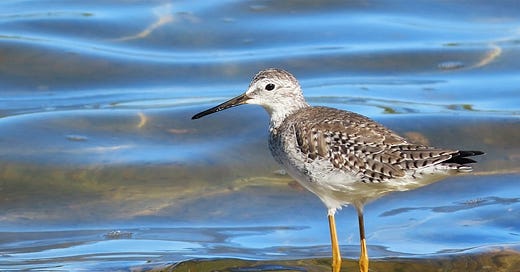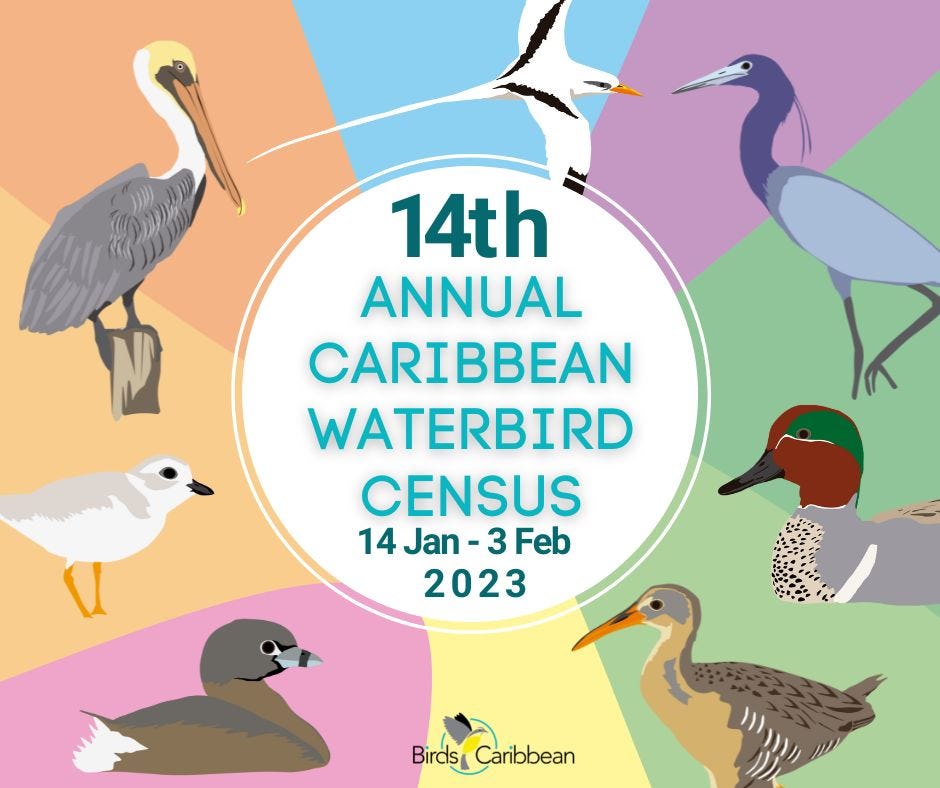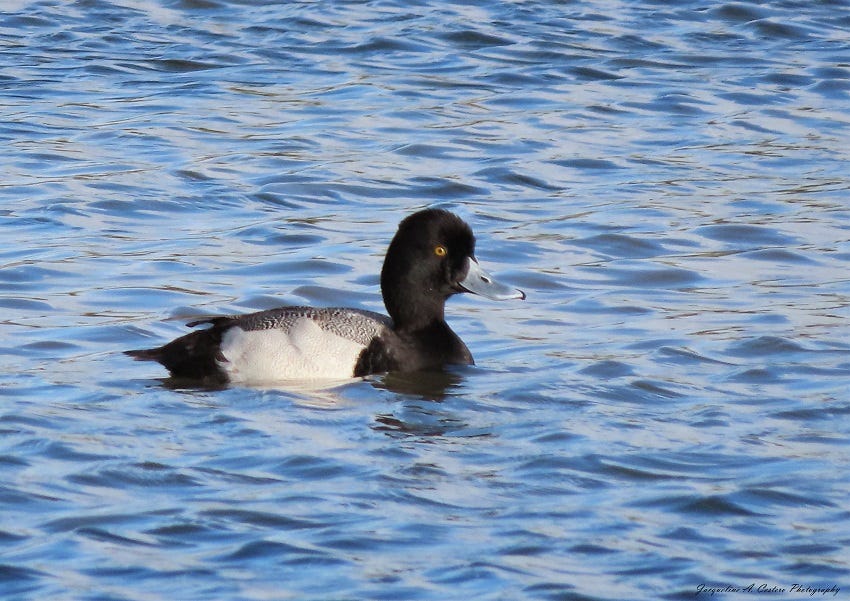That's a Wrap - Caribbean Waterbird Census 2023
The Caribbean Waterbird Census is one of my favorite counts of the year. Monitoring sites over a couple of weeks allows me to focus more time on each location and return to a site if I feel something interesting might be happening.
So why do I participate in this work? As a member of Birds Caribbean, I feel it’s important to support as many of their programs as possible.
They sum up the program’s value as follows:
Why the CWC?
Why do we want to take part? It’s more than just an opportunity for another great birding excursion. The Caribbean is home to 185 species of waterbirds! Many of these are migratory but the group also includes many endemic species and a number that are endangered globally. Waterbirds and their wetland habitats in the Caribbean face a range of threats, including development, pollution, human activities, and climate change impacts. A structured, long-term survey program, like the CWC, is essential for understanding how to best conserve this exceptional group of birds and manage their habitats.
This year, Birds Caribbean emphasized Piping Plovers during the census. This is their rationale for the survey.
Why Join the Survey?
This small, round shorebird is listed as “Near Threatened” by the IUCN with an estimated global breeding population of just 8,400 birds. They breed in restricted areas of North America but migrate south in fall with some birds spending their winter in the Caribbean. It’s vital that we continue to learn more about the numbers and distribution of this rare shorebird in our region.
We already know about some of the main islands and areas where Piping Plovers spend the winter in the Caribbean, including the Bahamas, Cuba, and Turks and Caicos Islands. We also know they have been spotted in smaller numbers in other countries, including Puerto Rico and its offshore islands and cays, the Dominican Republic, Jamaica, the US and British Virgin Islands, St Kitts, Guadeloupe, Anguilla, and Bonaire (there are just one or two records for some of these countries). But in the ‘right’ habitat there are likely more Piping Plovers to be found, both in ‘new’ locations on islands where they have been seen before and perhaps some islands where they haven’t been seen yet. We need more people out there looking for them!
You may recall my report on our visiting Piping Plover back in November as part of my piece - “A Wild Weekend of Waders.” If you missed it, the publication date was November 11, 2022. In that piece, I noted that a single bird had been visiting Cove Pond IBA for several years.
Upon visiting the survey site, I was disheartened not to see the little bird in its usual location. The increase in traffic on the beach had taken its toll on the bird population. While I was there, a dog on the beach disrupted several flocks of plovers and sandpipers, leaving them exhausted. One such group was forced into position behind me. I quickly snapped photographs but did not expect to see much as it was directly into the sun.
Much to my surprise, I captured the flock and noted there was not one, but two Piping Plovers! So either we have two new birds, or the original plover has encouraged a friend to vacation in Anguilla this year! Neither bird is banded, leaving no way to identify their breeding site.
The encounter was reported and displayed on the interactive map seen below. At the time of publication, only three other islands reported this species. The Bahamas actually had two sites as they are a big overwintering spot for Piping Plovers.
The presence of a second bird is encouraging, and I will continue to monitor this location for further developments.
Banded or flagged birds are often seen during surveys. This count was no exception. On 1/24/2023, I identified Sanderling “V7+” on Cove Pond via the Cap Juluca causeway. The sighting was reported to Bandedbirds.org, and the resighting map was generated.
This individual was initially banded at Villas Beach in New Jersey on 5/18/2022. It was reported again on 5/23/2022 at Moores Beach, not far from Cape May, New Jersey. I will keep an eye out for this little one as part of my ongoing monitoring.


Over the census period, I recorded 58 species of birds including the elusive Mangrove Cuckoo!
Some notable species include a new Pied-billed Grebe chick at the Merrywing Pond System on the Aurora Golf Course. This is a moment of relief with at least one pair able to reproduce at this site post-renovation.
Forest Bay Pond was bustling with 25 species. Highlights included a Great Blue Heron flying off into the sunrise. Unfortunately, I was so mesmerized by its beauty in flight I forgot to get a photo!
I captured this beautiful Lesser Scaup as it fed along with a group of White-cheeked Pintails. I have not seen this species on Anguilla since January 2019. His girlfriend was a bit camera-shy and was hiding in the grass.
A group of five Green-winged Teal consisting of one stunning male and four females, was also seen on Forest. This is the first record for this species in my eBird list. Yahoo! Who doesn’t love a “lifer.”
Overall numbers were low, but variety was consistent with the time of year. It was exciting to see some returning waterfowl species. Recent hurricanes around the region have made them scarce.
Conspicuously absent were the Osprey and Peregrine Falcon. They must be lurking out there somewhere. (Insert perplexed emoji here.)
Next up: The Great Backyard Bird Count February 17-20!
Many apologies for the button error in last week’s post. I turned on the pledge subscription feature by accident. It should be corrected now. If you have any further issues, please let me know.











